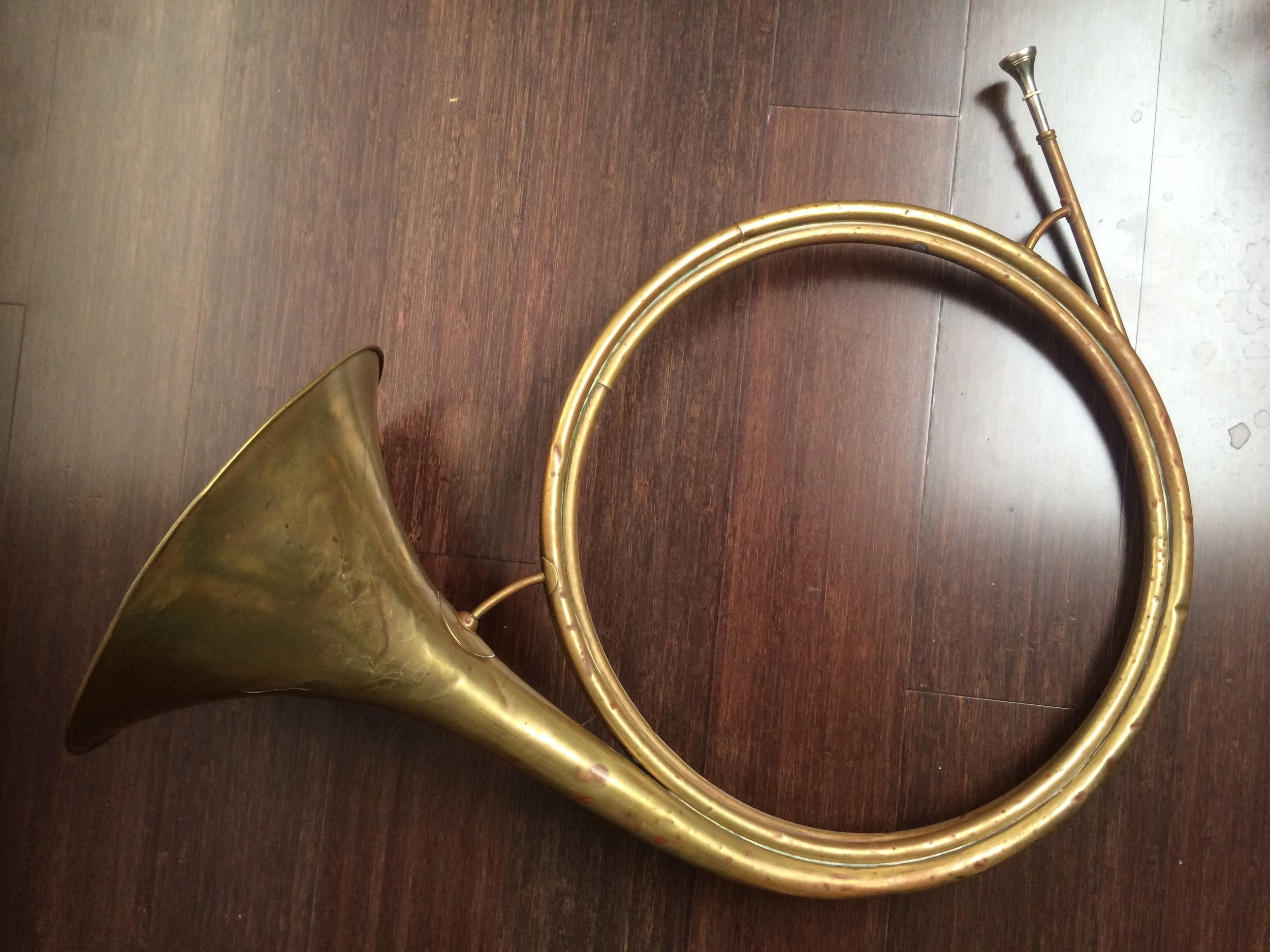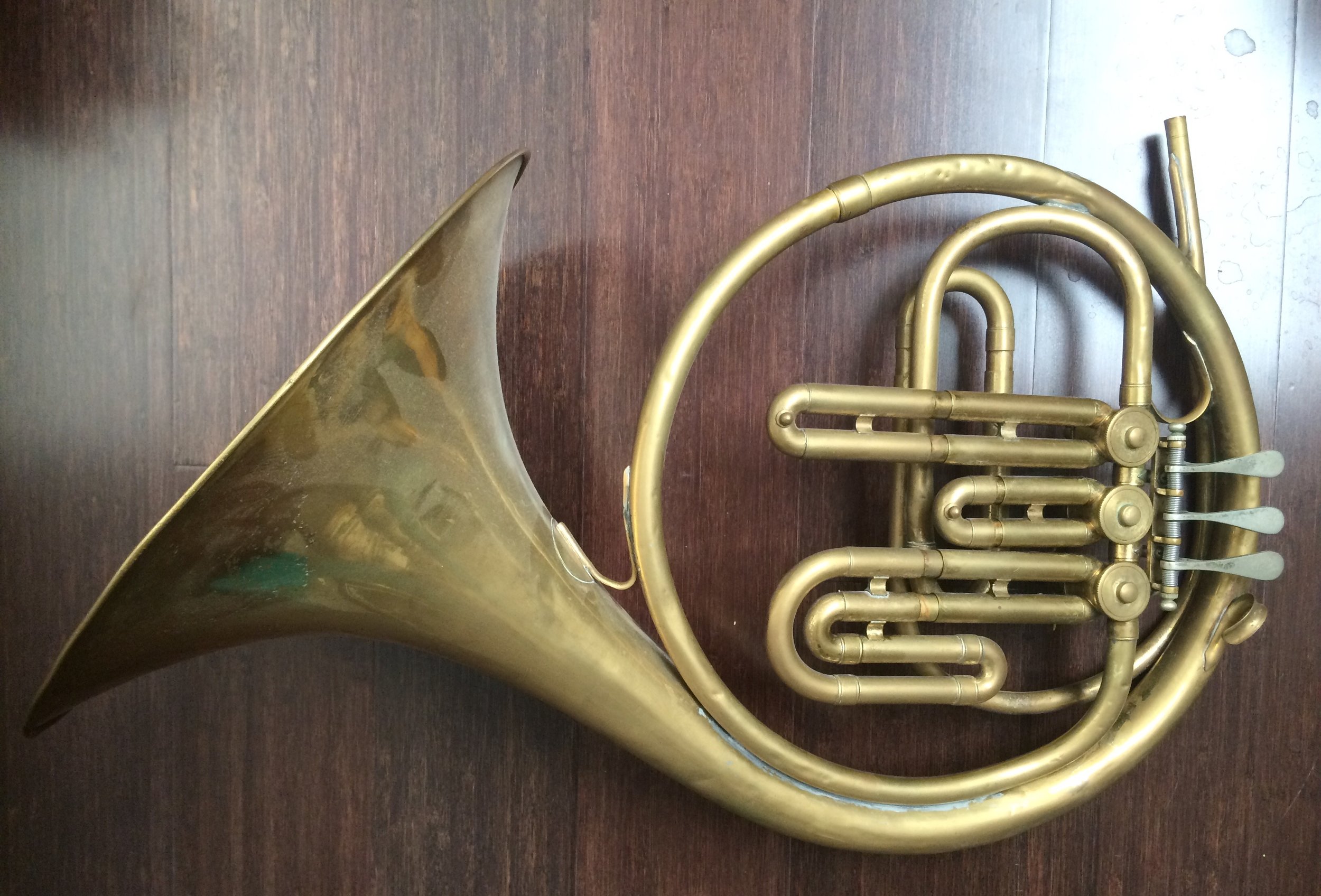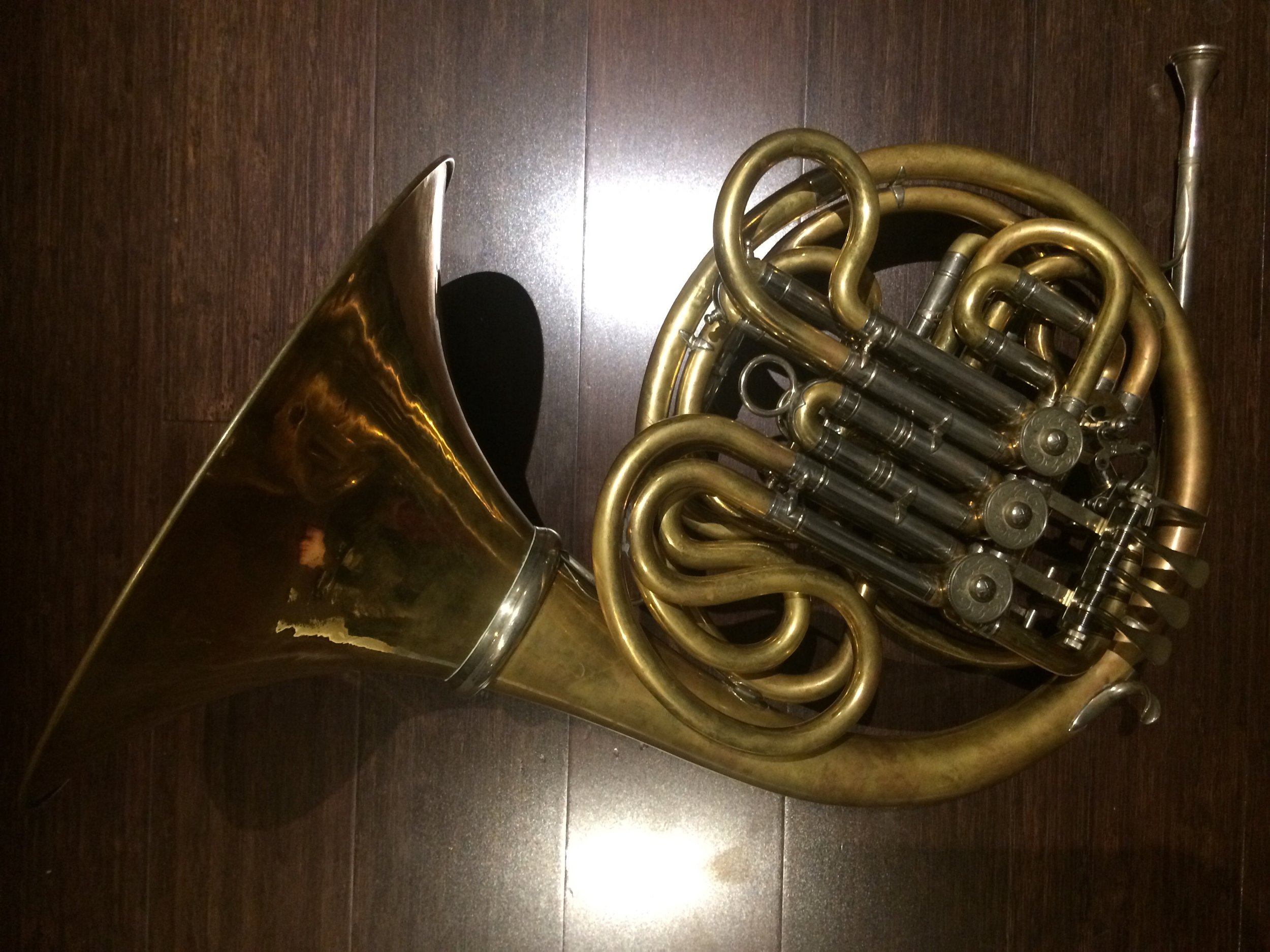A SHORT HISTORY OF THE HORN
Want to hear performances on all of these instruments and learn more about them and their repertoire? Head over to this dedicated page of videos here.
The modern “French” horn is a direct descendant from the ancient hunting horn. The 17th century fashion for large looped cor de chasse emerged from the French court and quickly became popular throughout Europe. Initially the hunting horn was brought into the orchestra as a sound effect, suggesting the outdoors and chivalry associated with the instrument.
Pélisson (Gaillard & Loiselet) trompe de chasse (post 1930s).
The baroque horn was played often with the bell of the instrument in the air and the demanding parts of Bach, Handel, Zelenka et al would have required great sensitivity of technique. The high tessitura of the horn parts of his era was due to the horn having a greater range of notes in the highest part of the instrument. To change the key of the instrument terminal crooks were added to the instrument lengthening or shortening the instrument and thereby changing the overall pitch.
Webb/Halstead baroque horn.
Webb/Halstead baroque horn- painted bell by Isabel Osselaere
Richard Seraphinoff baroque horn copy of an instrument by Johann Leichnambschneider (1679–p.1725) instrument on loan from Seraphinoff.
Richard Seraphinoff baroque horn copy of John Christopher Hofmaster (b.?–d.1764). Original in the University of Edinburgh collection.
During the mid- 18th century the development of “hand technique” revolutionised the instrument. By inserting the hand (traditionally, but not exclusively the right hand) into the bell of the instrument and to different degrees “stopping” the air flow it became possible to create notes in-between the notes of the harmonic series. This new technique led to an explosion of compositions for the horn. Germany and Bohemia, which had been the breeding ground for virtuosity since the early 18th century, buzzed with activity - Mozart and Haydn writing concerti for the instrument.
Andreas Jungwirth classical natural horn copy of Johann Anton Lausmann (active late 18th/early 19th century).
Jean Baptiste Tabard (b.1779–d. 1845) classical natural horn (cor d'orchestre) c.1830.
Marcel Auguste Raoux (1795–1871) classical natural horn (cor d'orchestre) c. 1820.
Horn players became “superstars” and toured Europe to wide acclaim. When the hand horn virtuoso Giovanni Punto premiered Beethoven’s Horn Sonata it was written in the Offner und Pesther Taschenburch (7th May, 1800): Today, Academy of Herr Beethover and Herr Punto... Who is this Beethoven? Such a name is not known in German musicla history. Putno is, of course, very well known.
Lucien Joseph Raoux (1753–1821) classical natural horn (cor solo), c. 1810.
Lucien Joseph Raoux (1753–1821) classical natural horn (cor solo) c. 1810 - painted bell.
The instrument was also celebrated in France where it became an integral part of the Concert Spirituel and where many of the most enlightening writing on the instrument emerged. The hand horn was so important in France that it only left the syllabus of the Paris Conservatoire in 1902.
Piston horn: Post 1878 Raoux ("Fournisseur Du Conservatoire, Breveté S.D.G.D. Rue d'Angoulême No.66") with Marcel Auguste Raoux. monogram, fixed valve block (possibly Halari?).
Piston horn: Marcel Auguste Raoux corpus, (c. 1862) with Boosey detachable (sauterelle) valve block 1918 (formerly owned by Norman Del Mar).
Piston horn: two valve instrument by Besson (on loan from Chris Larkin).
Piston horn: Pre 1931 Hawkes & Sons, London ("Excelsior Sonorous Class") with fixed valve block.
Henri Selmer F/B flat piston valve horn (cor ascendant i.e. with ascending third valve), early 20th century.
Cor solo (principal horn) of the Opéra Paris Lucien Thévet (1914–2007)in an 1955 advert for Henri Selmer
Since the valves inception during the early part of the 19th century there have been arguments as to who really was responsible for the innovative discovery. The discovery was slow to become accepted and the various forms of early valves had many quirks. As the technology improved so the valve horn slowly became the norm though many mourned the death of the colourful hand horns and early valve horns.
Rotary horn: Leopold Uhlmann (Vienna, 1806–1878), mid. 19th century.
Rotary horn: Leopold Uhlmann (1806–1878), mid. 19th century
Vienna horn: Andreas Jungwirth after Uhlmann.
Rotary horn: Vladimír Kupka (Mariánské Hory, Moravia), early 20th century.
Rotary horn: Eduard Kruspe (Erfurt, 1831–1919) "Gumbert" Model compensating F/B flat rotary horn, early 20th century.
Rotary horn: Bohland und Fuchs (Graslitz, fl. 1870–1945).
Josef Lidl (Brno, 1895–1948) Walzenhorn, c. 1940s.
Another (!) Josef Lidl (Brno, 1895–1948) Walzenhorn, c. 1940s.
Holton Single B flat
Alexander (Mainz) Model 103 (double F/B flat).


























